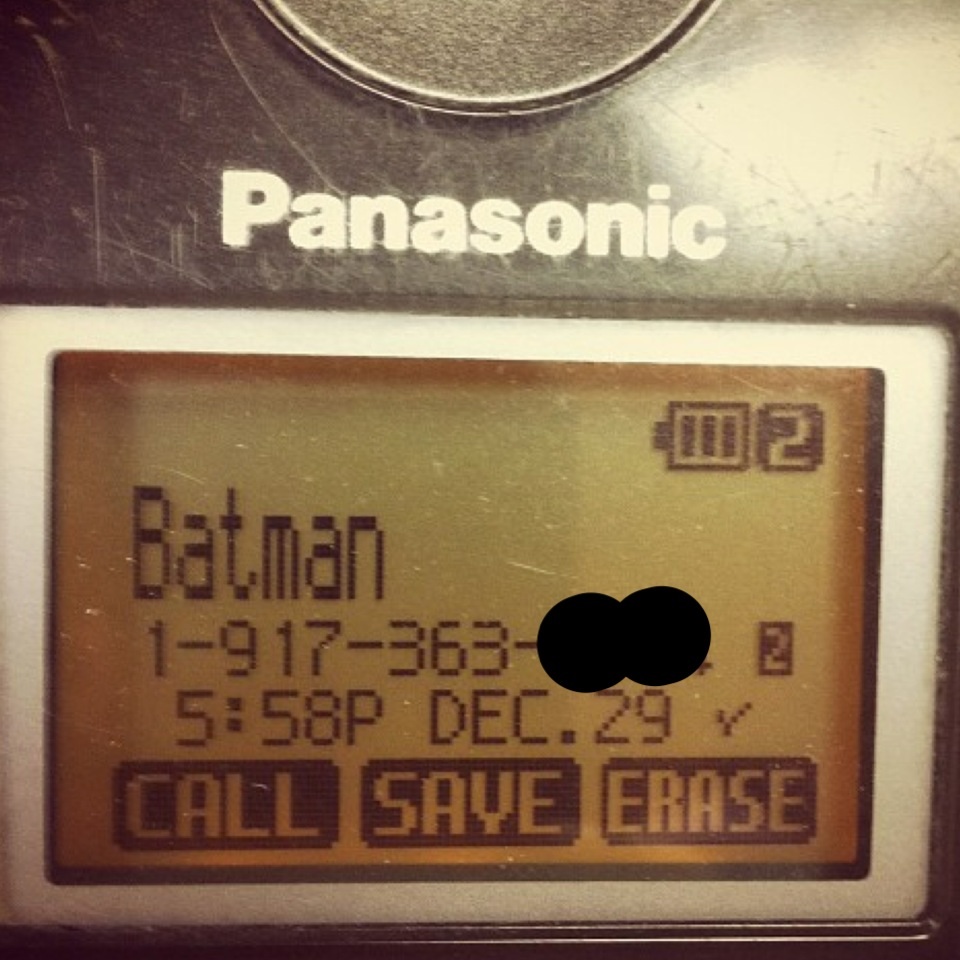
Don’t be fooled by Call Display – It’s not as reliable as you might think…
Do you remember the old days? Back when there were rotary phones in your home? A cellular phone was something new and weighed about 5 lbs (more than some laptops these days.)
Ah, the good old days. Things were simpler then. I’m serious. Everyday things were much simpler. Complicated stuff was reserved for the rich and elite. You only ever ran into something complicated if you were in the upper levels of a company or university.
I remember those days as a child (Dave probably remembers them even better than me.) So why am I going on about old times like this? It’s because I wanted to talk about something that most of us make use of multiple times a day. It’s something that was invented in those simpler times of days gone by. Also, it has not changed at all since it was created.
What could this amazing invention, decades-old dinosaur be and how did it survive, unchanged, for so many years and still be in such heavy use today?
Why, it’s ‘Call Display‘ of course.
What used to be an interesting new fad is now something that comes standard on pretty much every phone in the known universe. Assuming you didn’t build a phone yourself (there are lots of good DIY instructions on the Internet), you would need to go out of your way to find a phone that DIDN’T have Call Display built into it.
So now I want to talk about Call Display. More to the point, I want to talk about ‘Why it can’t be trusted!’ To do that, we need to take a bit of a step back and talk about how a phone call works. Thus, I’ll go into a simple step-by-step inset of instructions for making a phone call.
Step 1) Pick up the phone
This is also known as putting your phone ON-HOOK. This is necessary, since it creates a connection from your phone to your Telecommunications providers’ equipment. Essentially, it lets them know you are going to make a call.
Step 2) Dial a number
This sends a series of signals to the equipment of your Telecom supplier that tells it where you want to connect to. Phone numbers can be thought of like a street address with different numbers, meaning you want to go to a different place.
Step 3) Connect to the phone system you dialed
This sends a connection signal to the phone number you dialed. The phone on the other end receives this constant connection signal and starts to ring. The ringing continues until the call is terminated (ending the connection signal) or answered (manually or automatically by an answering system like voicemail.)
That’s a high-level overview I know, but at the end of the day, it’s close to that. It is important to remember that at step 3, the phone that is ringing now has a connection to the phone that dialed its’ number.
So why is that important? It’s because of how Call Display works:
After a connection is made, another series of signals is sent (normally from the Telecom equipment) that says what the phone number calling is (it can also send text to show a name.) The call display system on your phone listens for a signal and displays that information. Since it can’t tell how many numbers will be sent, or where that signal comes from, it just listens for an electrical signal.
This is where an attacker can mess things up. After step 3, they have a connection to the phone on the other end. So, they just wait a small amount of time (let the Telecom finish sending its message) and then send the signal for a different number. Since Call Display simply listens for information, it will display the most recent message.
There’s really nothing that can be done about this with how the phone systems work. There’s no way to tell where an electrical signal comes from on the telephone line; just that you receive it. You can’t prevent a signal from being sent from the caller, because computers make use of telephone lines for communications as well. You can’t reliably build-in any sort of required electronic handshake to securely identify that a signal is coming from an” authorized” Call Display system. If you had that, a signal could simply be listened too and copied.
Like I said, Call Display is a very simple system. It trusts that whatever information it receives is being accurate and coming from the Telco. and Telco’s wouldn’t lie about the calling number. This is the reason why you can’t trust the information that Call Display shows you. It’s because the system inherently trusts any information it receives.
Doing this means you need to have your calls pass through a device capable of sending out signals to interfere with Call Display. While it is a simple system, doing that still requires a degree of knowledge and expertise that a lot people don’t have. But there are still some people who do have it, and not all of them are ethical. So, read that information with a grain of salt and remember that your best defense to avoid a telephone scam is to listen to the conversation without relying on Call Display.
If you have any questions about Call Display, you can reach out to your TRINUS Account Manager for some stress-free IT.
By Kind Courtesy of Your Friendly Neighbourhood Cyberman.

















